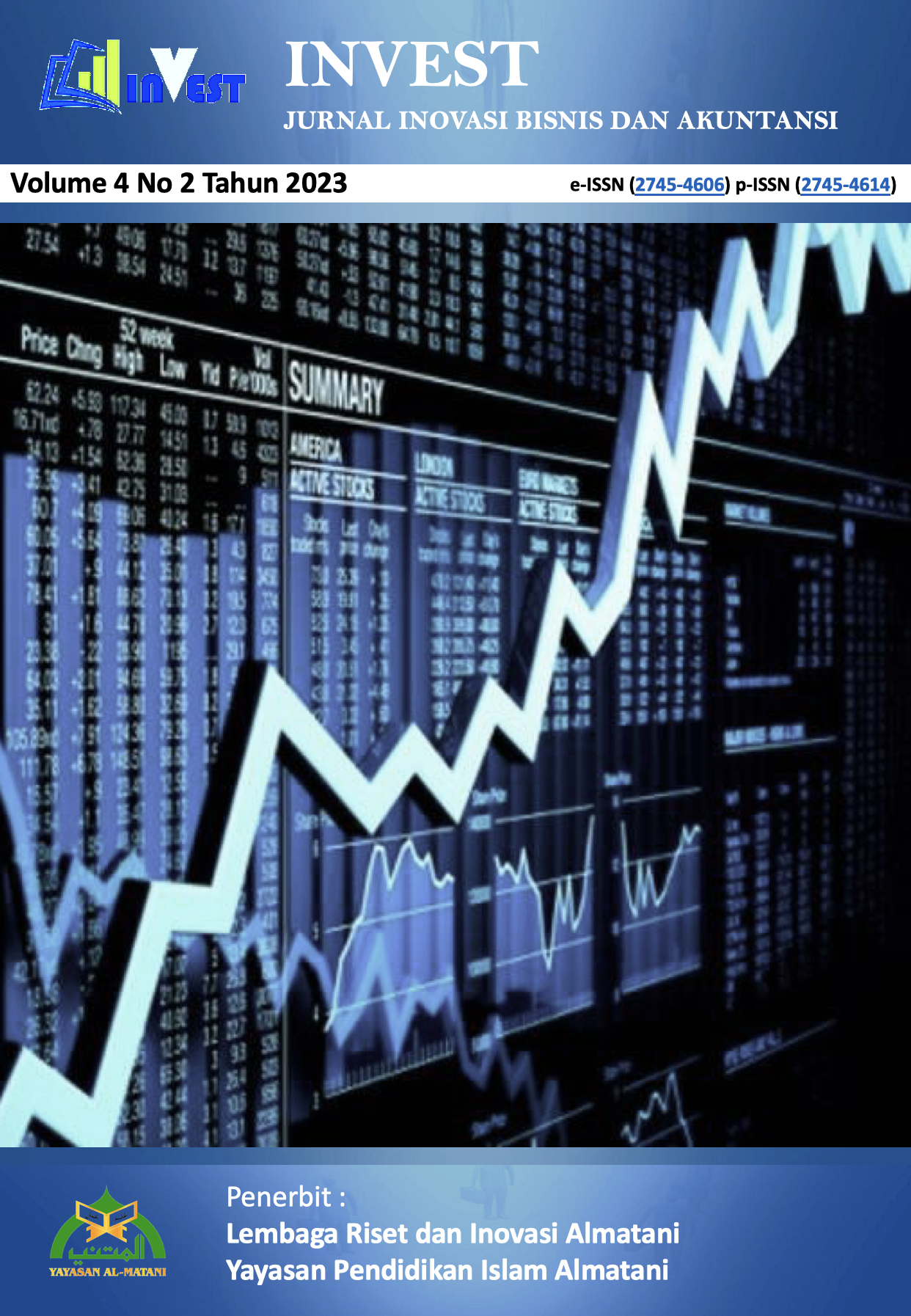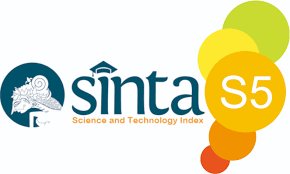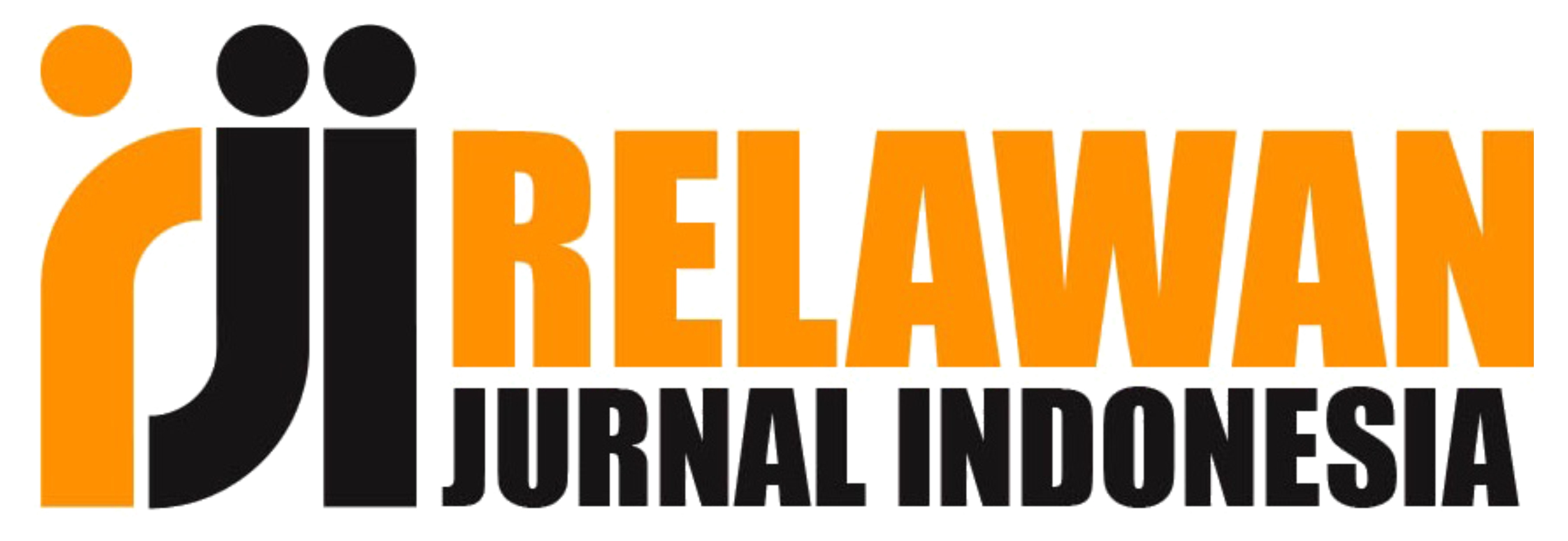The Influence Of Profitability Ratio, Leverage and Capital Intensity Ratio on Tax Avoidance Practices In Manufacturing Companies Listed On The IDX For The Period 2016-2020
DOI:
https://doi.org/10.55583/invest.v4i2.708Keywords:
Profitability, Leverage, Capital Intensity Ratio, Tax avoidance practicesAbstract
Tax avoidance practice is the act of organizing financial or business transactions to reduce tax liabilities legally without violating applicable tax laws. Testing the effect of profitability, leverage, and capital intensity ratio (CIR) on tax avoidance practices is the purpose of this study. The object of this research was conducted in the basic and chemical sub-sector manufacturing industries listed on the IDX in the 2016-2020 period. The sample used was 70 companies for five years with 184 companies observed. The technique of taking the sample uses purposive sampling whose method uses multiple linear regression. The type of data is secondary data such as financial and annual reports downloaded from the idx.co.id page and the company's official website. The results of this study show that the variables of profitability, leverage, and capital intensity have a positive influence on tax avoidance practices.
References
Anggriantari, C. D., & Purwantini, A. H. (2020). The Effect Of Profitability, Capital Intensity, Inventory Intensity, And Leverage On Tax Avoidance. Business and Economics Conference in Utilization of Modern Technology Magelang. https://journal.unimma.ac.id/index.php/conference/article/view/4150/1951
Azis, M. T., & Widianingsih, I. U. (2021). The Effect Of Profitability, Leverage, And Company Size On Tax Avoidance In Pharmaceutical Companies In Bei. Scientific Journal of Management Economics: Multi Science Scientific Journal, 12(1), 40-51. https://doi.org/10.52657/jiem.v12i1.1444
Budianti, S., & Curry, K. (2018). THE EFFECT OF PROFITABILITY, LIQUIDITY, AND CAPITAL INTENSITY ON TAX AVOIDANCE. In National Seminar of Scholars to (Vol. 4). www.republika.co.id/Jum'at,06-04-2018
Dewi, N. L. P. P., & Noviari, N. (2017). THE EFFECT OF COMPANY SIZE, LEVERAGE, PROFITABILITY AND CORPORATE SOCIAL RESPONSIBILITY ON TAX AVOIDANCE. E-Journal of Accounting, Udayana University, 21(1). https://ojs.unud.ac.id/index.php/akuntansi/article/view/34029/20862
Dr. Siti Kurnia Rahayu, S. M. A. A. C. (2018). Taxation Concepts and Formal Aspects. Engineering Science. https://books.google.co.id/books?id=8s7ZzwEACAAJ
Dwiyanti, I. A. I., & Jati, I. K. (2019). The Effect of Profitability, Capital Intensity, and Inventory Intensity on Tax Avoidance. E-Journal of Accounting, 2293. https://doi.org/10.24843/EJA.2019.v27.i03.p24
Fahmi, I. (2014). Financial Performance Analysis: A Guide For Academics, Managers, And Investors to Assess and Analyze Business from Financial Aspects (Third Print). CV Alfabeta.
Fauziah, F., & Kurnia, K. (2021). The effect of profitability, company size, and leverage on corporate tax avoidance in the consumer goods industry sector. Journal of Accounting Science and Research (JIRA), 10(4).
Fernández-Rodríguez, E., & Martínez-Arias, A. (2012). Do Business Characteristics Determine an Effective Tax Rate? The Chinese Economy, 45(6), 60-83. https://doi.org/10.2753/CES1097-1475450604
Ghozali, I. (2018). Application of Multivariate Analysis with the IBM SPSS 25 Program (Ninth). Diponegoro University Publishing Agency.
Harahap, S. S. (2001). Critical analysis of financial statements. RajaGrafindo Persada. https://books.google.co.id/books?id=VosWAQAAMAAJ
Hery, S. M. C. R. (2016). Financial Statement Analysis-Integrated And Comprehensive Edition. Gramedia Widiasarana Indonesia. https://books.google.co.id/books?id=2Lc8DwAAQBAJ
Hidayat, W. W. (2018). The Effect Of Profitability, Leverage And Sales Growth On Tax Avoidance: Case Study Of Manufacturing Companies In Indonesia. Journal of Management and Business Research (JRMB), 3(1).
Hutapea, R., & Sinabutar, R. (2021). The Effect of Corporate Governance, Profitability, and Leverage on Tax Avoidance in Chemical Sub-Sector Manufacturing Companies in 2017-2019. Economical Journal, 14(1b). https://jurnal.unai.edu/index.php/jeko/article/download/2507/1888/8605
Irawati, W., Akbar, Z., Wulandari, R., & Barli, H. (2020). Analysis of Profitability, Leverage, Sales Growth and Family Ownership on Tax Avoidance. Journal of Accounting Scientific Studies (JAK), 7(2), 190-199. https://doi.org/10.30656/jak.v7i2.2307
Jensen, M. C., & Meckling, W. H. (1976). Theory of the firm: Managerial behavior, agency costs and ownership structure. Journal of Financial Economics, 3(4), 305-360. https://doi.org/10.1016/0304-405X(76)90026-X
Kasiram, M. (2008). Research Methodology. UIN-Malang Press.
Cashmere. (2019). Analysis Of Financial Report (Twelfth). PT Raja Grafindo Persada.
Kompas.com. (2016). How Google Utilizes "Loopholes" to Avoid Taxes. In https://amp.kompas.com/tekno/read/2016/09/20/10330087/cara-google-memanfaatkan-celah-untuk-menghindari-pajak.
m.liputan6.com. (2021). Pandora Papers, Revealing the Secret Wealth and Tax Evasion of World Officials. In https://www.liputan6.com/bisnis/read/4674851/pandora-papers-terungkapnya-kekayaan-rahasia-dan-penghindaran-pajak-pejabat-dunia.
Nilasari, N. O., & Arisyahidin, A. (2021). Analysis of Profitability, Leverage, and Board of Commissioners on Potential Tax Avoidance (Study on Mining Companies Listed on the Indonesia Stock Exchange in 2016-2019). Autonomy, 21(2), 280. https://doi.org/10.32503/otonomi.v21i2.2050
Priyono, A. (2008). Teaching Materials for Classroom Action Research. Education Pathway Teacher Certification Program. Unnes.
Putra, I. D., & Amanah, L. (2019). The Effect of Profitability, Good Governance and Leverage on Tax Avoidance in the Consumer Goods Industry Sector. Journal of Accounting Science and Research (JIRA), 8(12).
Rahmadani, Muda, I., & Abubakar, E. (2020). The Effect of Company Size, Profitability, Leverage, and Earnings Management on Tax Avoidance Moderated by Political Connection. Journal of Accounting and Finance Research, 8(2), 375-392. https://doi.org/10.17509/jrak.v8i2.22807
Rifai, A., & Atiningsih, S. (2019). The effect of leverage, profitability, capital intensity, earnings management on tax avoidance. ECONBANK: Journal of Economics and Banking, 1(2), 135-142.
Rosdiana. (2018). The Effect Of Capital Intensity, Leverage, Institutional Ownership, And Profitability On Tax Avoidance. http://eprints.perbanas.ac.id/3724/8/ARTIKEL.pdf
Sandra, M. Y. D., & Anwar, A. S. H. (2018). THE EFFECT OF CORPORATE SOCIAL RESPONSIBILITY AND CAPITAL INTENSITY ON TAX AVOIDANCE (Empirical Study of Mining Companies Listed on the IDX). Journal of the Academy of Accounting, 1 (1). https://ejournal.umm.ac.id/index.php/jaa/article/download/6947/5929/18464
Selviani, R., Supriyanto, J., & Fadillah, H. (2019). The Effect Of Company Size And Leverage On Tax Avoidance Is An Empirical Case Study Of Chemical Sub-Sector Companies On The Indonesian Stock Exchange For The Period 2013-2017. Accounting.
Simanjuntak, O. D. P. (2019). Analysis of the Effect of Company Size, Leverage, and Profitability on Tax Avoidance. Medan Journal of Management and Accounting, 1(3), 172-178. https://doi.org/10.47709/jumansi.v1i3.2099
Sjahrial, D. (2017). Management Accounting (2nd ed.). MEDIA DISCOURSE PARTNERS.
Sugiyono. (2016). Quantitative, Qualitative and R&D Research Methods. Alfabeta.
Susanti, C. M. (2019). The Effect Of Conservatism, Leverage, Profitability, Company Size On Tax Avoidance. Journal Of Information, Taxation, Accounting, And Public Finance, 13(2), 181. https://doi.org/10.25105/jipak.v13i2.5021
Wijayanti, Y. C., & Merkusiwati, N. (2017). The effect of the proportion of independent commissioners, institutional ownership, leverage, and company size on tax avoidance. E-Journal of Accounting, Udayana University, 20(1), 699-728. https://ojs.unud.ac.id/index.php/akuntansi/article/view/29796/19370
Downloads
Published
How to Cite
Issue
Section
License
Copyright (c) 2023 Tangkas Putra Kencana, Tutut Dewi Astuti

This work is licensed under a Creative Commons Attribution-NonCommercial 4.0 International License.










